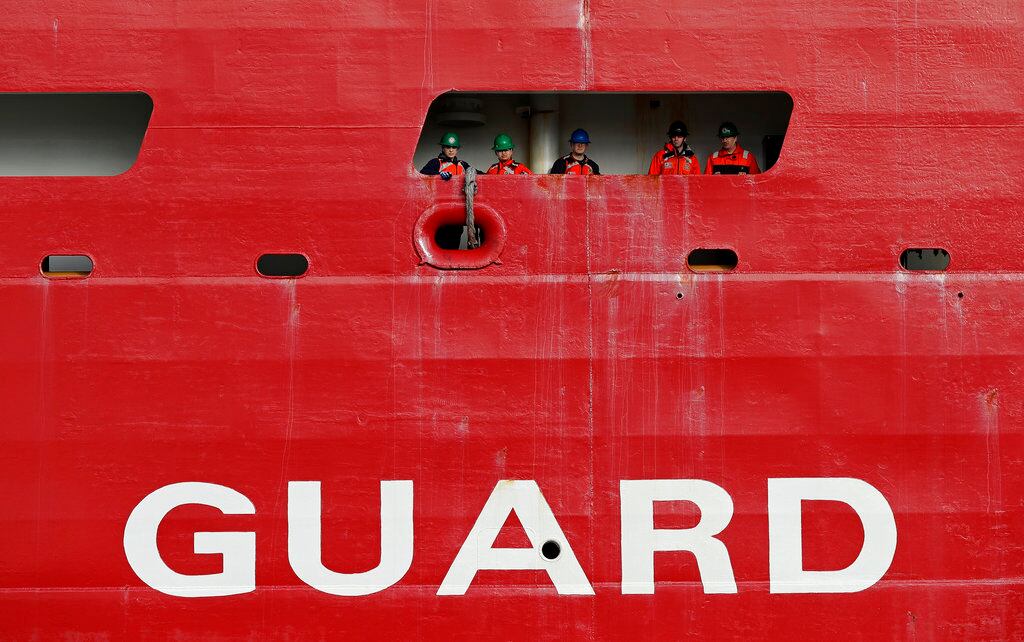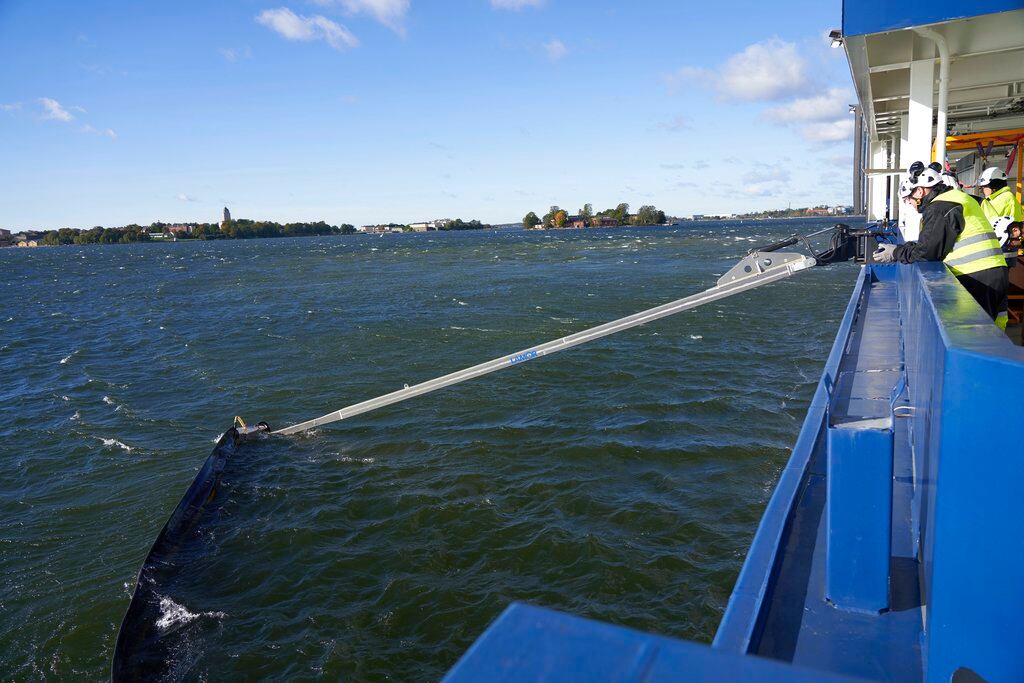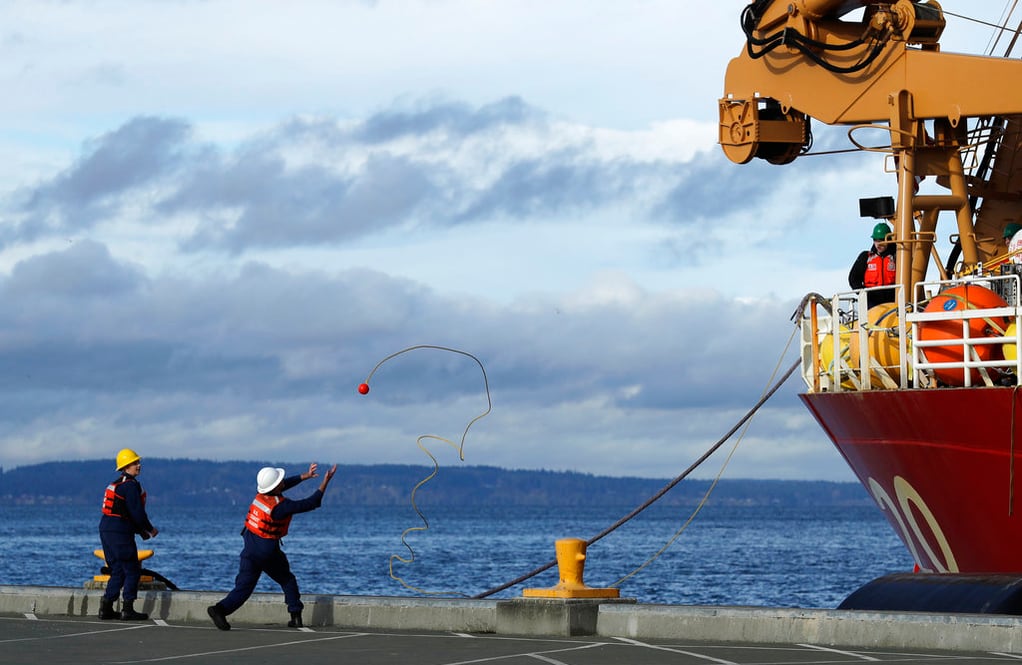SEATTLE — The crew of a U.S. Coast Guard icebreaker returned to their homeport in Seattle following the ship’s annual Arctic deployment.
The Healy returned Friday after 129 days away from home. Family members holding signs and waving welcomed it back.
Under the command of U.S. Coast Guard Capt. Greg Tlapa, the icebreaker’s crew completed three science missions, conducting physical and biological research in the Arctic Ocean in partnership with the National Science Foundation, the National Oceanic and Atmospheric Administration and the Office of Naval Research.

The National Science Foundation research included studying the physical oceanography and offshore ocean currents in both the Chukchi and Beaufort Seas. Their findings will aid scientists charting biological conditions in the Polar region, according to the Coast Guard.
The Office of Naval Research’s project is part a larger, multi-year effort to detail the effects of water inflow and surface force changes on ocean stratification and sea ice in the Beaufort Sea. The Healy’s crew fixed special instruments on ice floes and anchored subsurface moorings to the seafloor, which will remain until they return next year, officials said.
The mission for the National Science Foundation is designed to capture measurements from subsurface moorings on the Barrow Canyon Slope as well as data collected from Healy’s onboard scientific equipment, according to the Coast Guard.
Beyond the scientific research, the Healy also serves as an important military surface vessel capable of operating in the ice-choked waters of the Arctic Ocean. The icebreaker is used for search and rescue missions, escorting warships and other vessels, environmental protection and enforcing the law in the Arctic region.
RELATED

At 420-feet long with a displacement of over 16,000 tons and a permanent crew of 87, the Healy is listed as the largest ship in the U.S. Coast Guard.
It’s also one of only two icebreakers in the service. The other is the cutter Polar Star, a heavy breaker that’s also homeported in Seattle.
Commissioned in 1976, the aging Polar Star recently sailed to the Antarctic, part of its annual four-month Operation Deep Freeze deployment.
Overseen by U.S. Pacific Command, Deep Freeze is the joint logistical mission by the armed forces to Antarctic researchers. Polar Star’s job is to blaze a trail through ice sometimes 10-feet thick so that supply ships can deliver their cargo to National Science Foundation research stations.
The Coast Guard hopes to add six new Polar Security Cutters, the newly-renamed class of icebreakers that officials predict will provide presence patrols in the coldest climes.
Prine came to Navy Times after stints at the San Diego Union-Tribune and Pittsburgh Tribune-Review. He served in the Marine Corps and the Pennsylvania Army National Guard. His awards include the Joseph Galloway Award for Distinguished Reporting on the military, a first prize from Investigative Reporters & Editors and the Combat Infantryman Badge.




